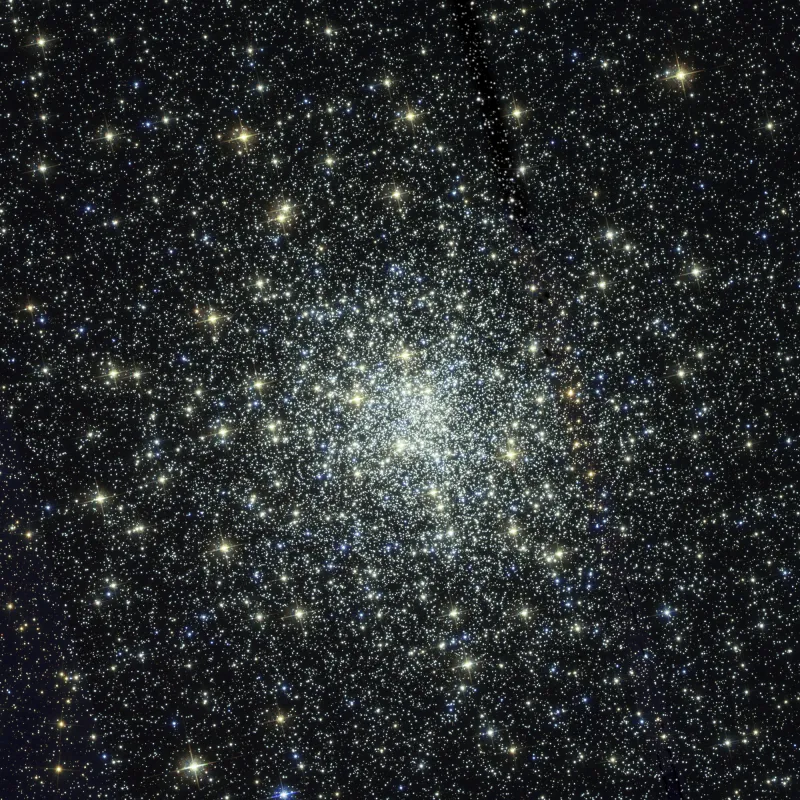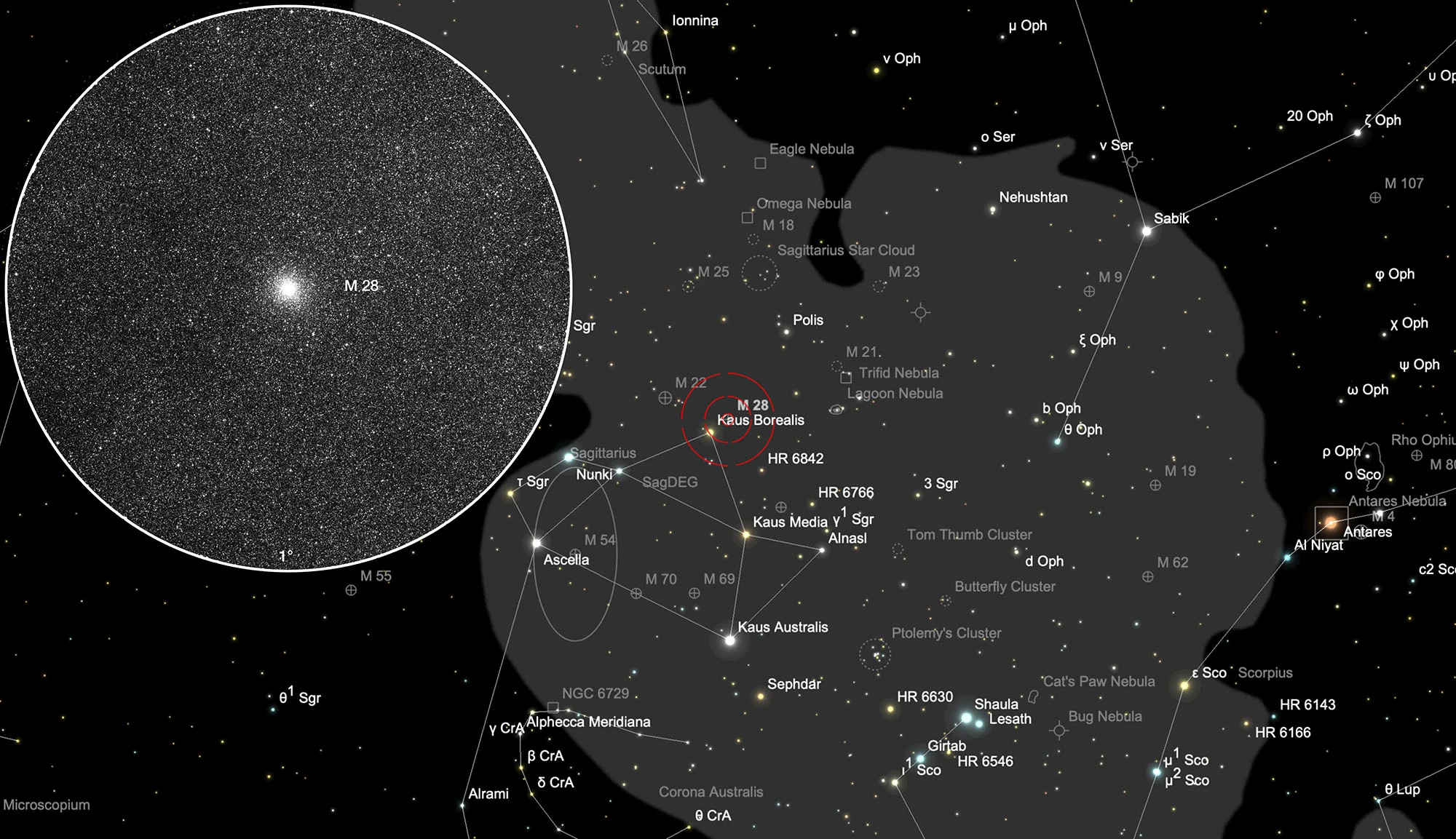Globular Cluster Messier 28

Object Description
The globular cluster is located about 0.8° northwest of the star Kaus Borealis (λ Sagittarii, 2.82 mag). It was first discovered by Charles Messier in July 1764. He described it as a «star-less nebula, round, difficult to see in a 3.5-foot telescope, diameter 2'». Presumably William Herschel was the first to break down M 28 into its single stars. His son John wrote the following: «Very bright, round, strongly condensed, resolved into stars 14 ... 15 mag. A beautiful object.»
M 28 is somewhat in the shadow of its bigger brother M 22, which is only 3° away. The amount of dust in the region also contributes to this. It is estimated that this will result in a loss of 2.5 magnitudes. M 28 is one of the more compact and dense globular clusters. The integrated spectral type is F9 and the mean brightness of the brightest 25 stars is 14.73 mag. It is moving away from us at 11.11 km/s. The distance is estimated at 6 kpc (19'600 ly).[4, 145]
The globular cluster is particularly noteworthy as it is the first to have a millisecond pulsar found: PSR B1821-24. This dense neutron star rotates at an insane speed (once every three milliseconds) and emits radiation from its poles, the concentrated beam of which sweeps across the earth like that of a lighthouse. The pulsar was discovered in 1986 with the Lovell radio telescope in England. [215]
| Designation | NGC 6626 |
| Type | GCL (IV) |
| Right Ascension (J2000.0) | 18h 24m 32.9s |
| Declination (J2000.0) | -24° 52' 10" |
| Diameter | 13.8 arcmin |
| Visual magnitude | 6.9 mag |
| Metric Distance | 5.500 kpc |
| Dreyer Description | !, globular, vB, L, R, geCM, rrr, st 14…16 |
| Identification, Remarks | h 2010=3743; GC 4406; M 28; GCL 94; ESO 522-SC23 |
Finder Chart
M 28 is really easy to find. It is located in the constellation Sagittarius, about 0.8° northwest of the star Kaus Borealis (λ Sagittarii, 2.82 mag). It can best be seen in the months of February to December. Then the constellation is highest above the southern horizon.
